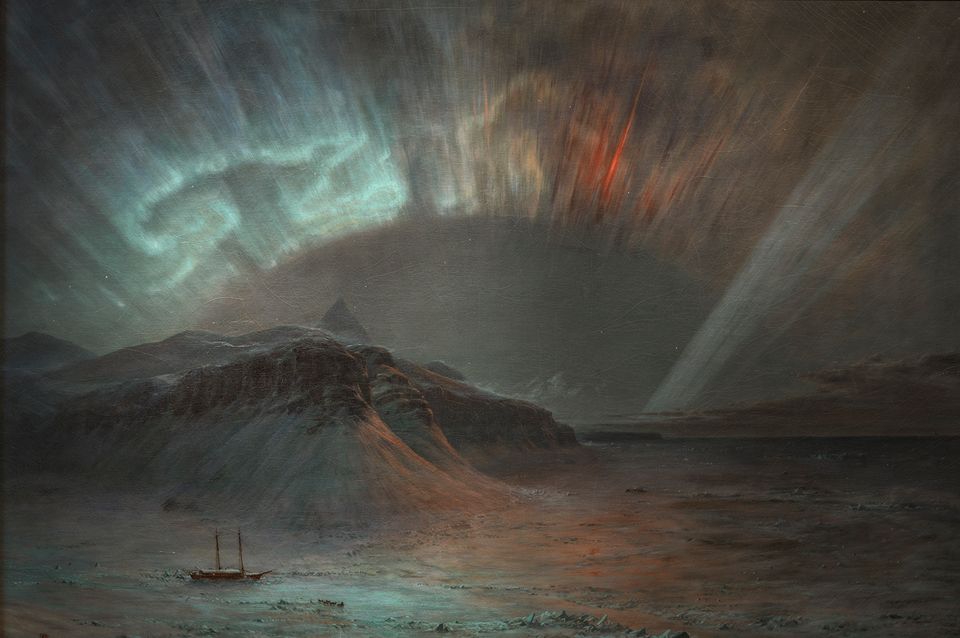
Frederic Edwin Church, Aurora Borealis, 1865, oil on canvas, 56 x 83 1/2 in., Smithsonian American Art Museum, Gift of Eleanor Blodgett, 1911.4.1, Photo by Gene Young.
About this Artwork
Frederic Church saw himself as an American Humboldt, steeped in science as well as art. He chose challenging subjects: falling water, erupting volcanoes, ancient icebergs, and the electromagnetic impulses of the aurora borealis. Church often infused his paintings with layers of metaphorical meaning. Here an explorer’s ship is trapped in the ice. The Canadian coast rises above the stranded ship; to the west lies Ireland, the terminus of the transatlantic cable. Overhead the auroras snake across the sky, their colorful arcs suggesting the snapped cables that plagued his friend and patron Cyrus Field for years as he strove to make trans-oceanic electronic communication a reality. Ships might be trapped in solid ice, but electricity promised the possibility of global communication if it could only be harnessed. The beauty of the auroras and Church’s appreciation of the science that explains them remind us of Humboldt’s declaration that “nature and art are clearly united in my work”—words that were equally true for Church. In the end, we understand that both are essential to our appreciation of the interconnectedness of all aspects of nature.













